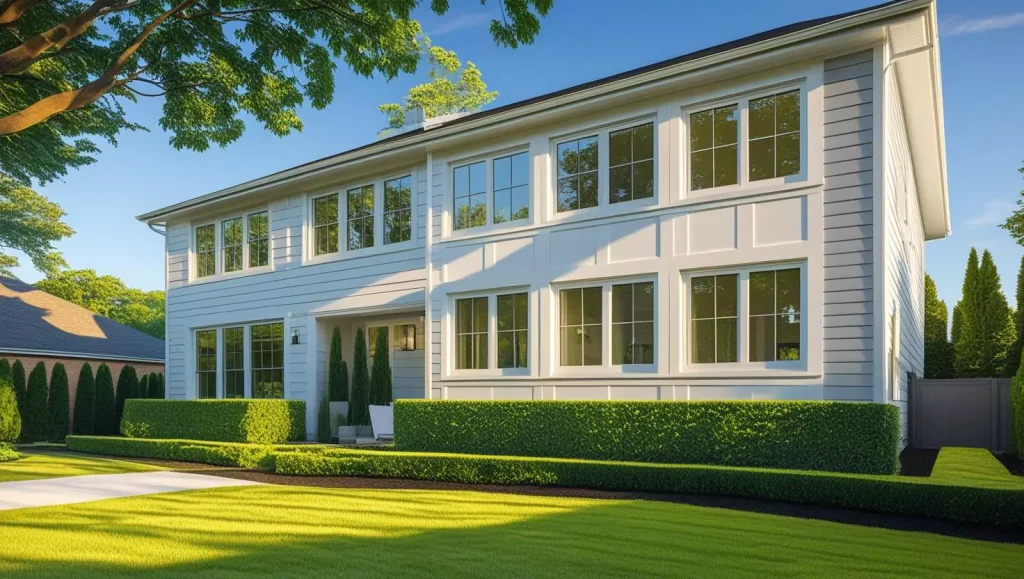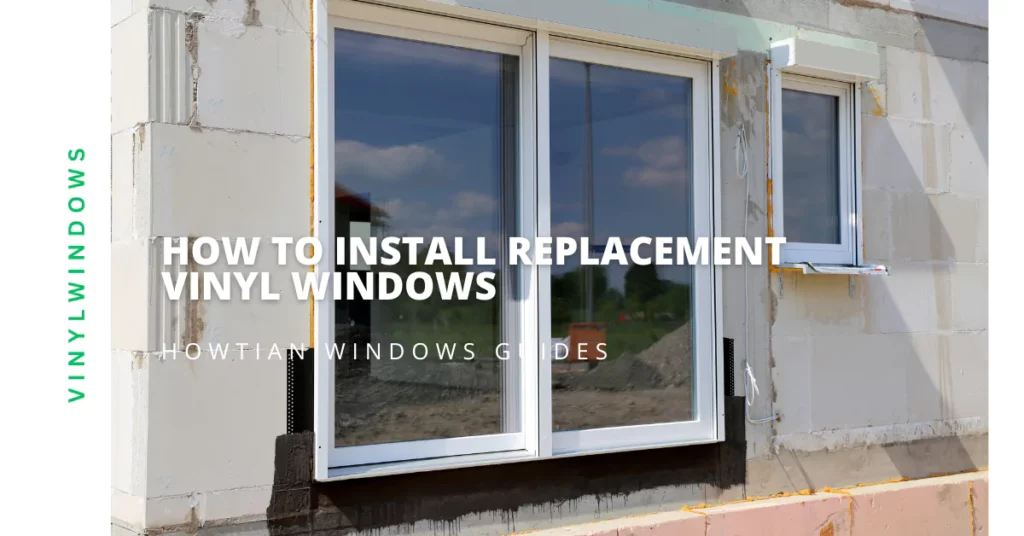Homeowners shopping for new or replacement windows can’t help but notice how frequently vinyl windows appear at the top of recommendation lists. With their mix of affordability, low maintenance, and versatility, it’s no wonder vinyl accounts for a huge share of window sales in residential construction and remodeling.
But popularity doesn’t always mean “best for everyone.” What exactly are vinyl windows, and should they be your top choice? Vinyl windows are made primarily from polyvinyl chloride (PVC), a durable and energy-efficient plastic material, and are commonly used across all home styles for their performance and value.

This article aims to provide a clear, balanced overview of vinyl window advantages and disadvantages. Whether you’re replacing drafty originals or planning a new build, use this guide to weigh the trade-offs so you can make an informed decision tailored to your needs.
Related reading: For a full walkthrough of features, style choices, and how to choose, see our Ultimate Vinyl Window Buyer’s Guide.
The Advantages of Vinyl Windows: Why They’re a Top Choice
A. Cost-Effectiveness & Affordability
Vinyl windows consistently offer a lower initial purchase price than wood, fiberglass, or even aluminum alternatives. This makes them especially appealing for those looking to upgrade energy efficiency or appearance without breaking the bank. Importantly, many homeowners find the “value for money” proposition hard to beat—vinyl provides solid features and performance at an accessible price point.
B. Low Maintenance
With vinyl, you can say goodbye to repainting every few years. These windows do not require painting or staining, resist peeling and corrosion, and are easily cleaned with just soap and water. The material itself is impervious to rot and rust, ensuring long-lasting curb appeal with minimal effort.
C. Energy Efficiency
Vinyl acts as a natural insulator, helping to keep your home comfortable year-round. Multi-chambered vinyl window frames further reduce heat transfer, and the material pairs well with advanced glass packages (double or triple pane, Low-E coatings, gas fills).
Want details on energy ratings or glass packages? See our Buyer’s Guide for in-depth analysis.
D. Durability & Longevity
Vinyl is remarkably resistant to moisture and pests—problems that often shorten the lifespan of wood and some metals. The color is molded throughout the material, so minor scuffs don’t show as readily, and modern vinyl formulas are less susceptible to fading. Expect a typical lifespan of 20–30 years, and sometimes longer in milder climates.
E. Variety in Styles and Colors
From classic double-hung to sliders, casements, or specialty shapes, vinyl windows are available in almost every traditional or contemporary style. While early vinyl came in only white, today’s lines include a range of solid colors and even faux-wood finishes for more aesthetic flexibility.
F. Environmental Considerations (Pros)
Because vinyl windows are energy-efficient, they help reduce your household’s carbon footprint over time. Some brands use recycled vinyl content and many vinyl frames can be recycled at end-of-life, though this varies by region and facility.
If you’re interested in the sustainability story, check out The Environmental Impact of Vinyl Windows for a nuanced discussion.
The Disadvantages of Vinyl Windows: What to Watch Out For
A. Aesthetics & Appearance
Vinyl windows can sometimes look less “premium” or authentic than natural wood—particularly in historic renovations or upscale properties. Visible seams, bulkier frame profiles, and limited custom trim options may not suit all architectural styles.
B. Expansion and Contraction
Vinyl expands and contracts more with temperature swings than wood or fiberglass. Poor installation or dark color choices can lead to warping, minor air leaks, or difficulty operating the window over time. High-quality manufacturing and professional installation can minimize these issues.
C. Limited Color Options and Fading
While color choices have expanded, the palette remains more limited than what’s available for wood or fiberglass. Darker colors are more prone to heat buildup and fading. Custom and metallic finishes are rare, and once a vinyl window is manufactured, you generally cannot repaint it without special coatings.
D. Structural Limitations
Vinyl can become brittle in extreme cold, potentially shortening lifespan in harsher northern climates. Large picture windows or unusual shapes may need internal reinforcements (like steel or aluminum), sometimes impacting the window’s sightlines or appearance.
E. Potential for Chalking
Over time, some vinyl may develop a white, powdery residue (chalking) on the surface. While this is cosmetic and can be cleaned, it’s more common on lower-cost products without sufficient UV stabilizers.
F. Environmental Concerns (Cons)
PVC manufacturing and disposal present environmental questions—especially relating to dioxin production and non-biodegradability. While vinyl can potentially be recycled, not all localities offer facilities for large window frames, and improper disposal can be problematic.
For a deep-dive on both sides of the green equation, visit The Environmental Impact of Vinyl Windows.
G. Repairability
Unlike wood, which can often be patched, or fiberglass, which can be sanded and refinished, vinyl windows are not easily repaired. Significant frame cracks or warping typically mean replacement.
If repairability is a major concern, see our Vinyl vs. Wood Windows comparison for pros and cons.
Vinyl vs. Other Materials: A Comparative Overview
Below is a high-level look at how vinyl stacks up against other leading window frame materials. For in-depth, side-by-side breakdowns, visit our dedicated sections on Vinyl vs. Wood, Vinyl vs. Fiberglass, and more.
| Feature | Vinyl | Wood | Fiberglass | Aluminum |
|---|---|---|---|---|
| Initial Cost | Low | High | High | Moderate-Low |
| Maintenance | Very low | High | Low | Moderate |
| Energy Efficiency | High | High | Very High | Low |
| Durability | Good | Varies (can rot/swell) | Excellent | Good (may corrode) |
| Aesthetics | Good (modern options) | Premium, classic look | Modern, clean lines | Industrial look |
| Repairability | Difficult | Excellent | Moderate | Moderate |
Detailed pros, cons, and best-fit scenarios for each material are available in our Comparison Guides.
Making the Right Decision: Key Factors When Choosing Vinyl Windows
When considering vinyl windows for your home, keep these factors front-of-mind:
- Vinyl Quality: Not all vinyl is created equal—look for thick-walled profiles, UV stabilizers, and reputable manufacturers.
- Glass Package: Double-pane with Low-E coatings and argon or krypton gas fills offer the best everyday performance. Check the available glazing options.
- NFRC Ratings: Pay attention to U-Value and Solar Heat Gain Coefficient (SHGC) for energy savings—see our Buyer’s Guide for a full explainer.
- Warranty: Ensure coverage for frame, glass, and labor. Read the fine print and compare offerings.
- Installation Quality: Even the best vinyl window can fail if improperly installed. Always choose a professional with vinyl experience; see our installation advice.
- Home Style & Climate: Vinyl excels in a range of climates and fits most designs but may not be ideal for historic homes or extreme cold without upgrades.
- Installer/Manufacturer Reputation: Read reviews, ask for references, and verify certifications.
Conclusion: Final Thoughts on Vinyl Window Performance
Vinyl windows have earned their market position due to a blend of affordability, low upkeep, solid energy performance, and varied styles. Their drawbacks, while real, can often be mitigated with careful selection and professional installation.
If you seek a cost-effective, low-maintenance, and energy-efficient window upgrade, vinyl is often an excellent fit—especially in mild to moderate climates and for contemporary homes. If your priorities include premium aesthetics, frequent custom repairs, or historical authenticity, exploring wood, fiberglass, or other premium alternatives might be worth your while.
Next Steps:
Continue your research with our Vinyl Window Buyer’s Guide for selection tips, or consult our detailed material comparison articles for further guidance. And wherever you source your new windows, always prioritize installer quality and warranty for peace of mind.
Have a specific scenario or need tailored advice? Reach out for a consultation or browse our full learning center for answers to all your window questions.






